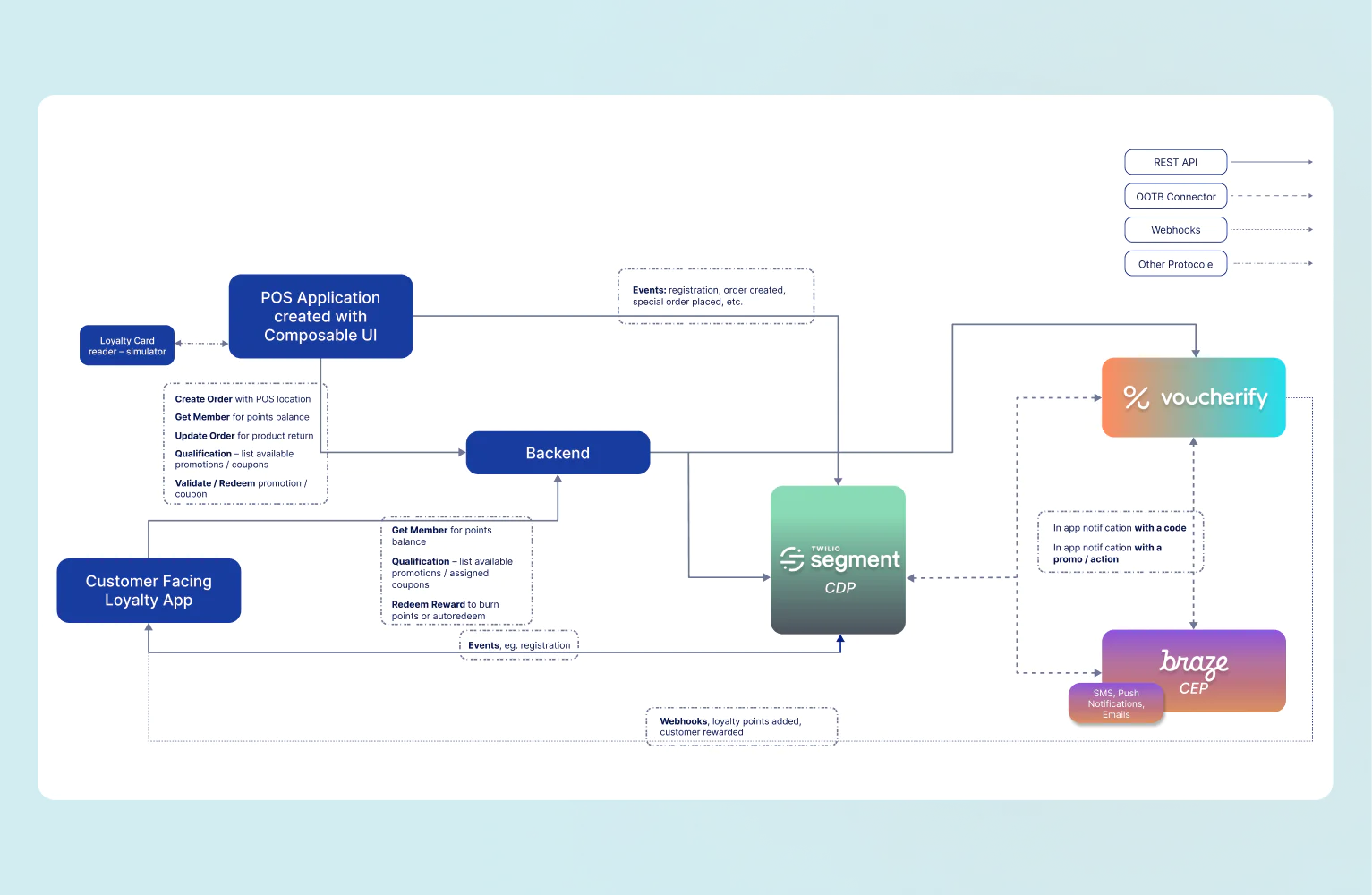When a customer enrolls in a loyalty program, Segment can trigger either an Identify or Track call, which is then passed to the Voucherify destination to update or create a customer profile, assign loyalty cards, and initiate loyalty actions like awarding welcome points.
Identify Call: Ideal for cases where customers sign up by filling out a form, as it captures user information.
Track Call: More appropriate when membership enrollment requires a specific action, such as purchasing a membership.
The approach depends on the sign-up process, and in this setup, you'll create separate sources for both the loyalty mobile app and a POS simulator. It is possible to connect as many sources as you need including online stores to cover all possible touchpoints.
Step 1: Create sources
You need an account with Segment and an existing Source for server-side tracking.
Install the appropriate Segment SDK for your server environment (Node.js, Python, Java, etc.).
Set up the SDK with the write key from your Segment source.
Use the SDK to send various event types (e.g., track, identify, page, screen, etc.).
It is also possible to run a client-side connection by placing Segment tags in the HTML of your website, however, this method is far less secure for production deployments.
Step 2: Set up Identify calls to recognize members
The Identify call links a member’s behaviour to their identity by sending traits like name, email, or user ID. After installing the Segment tracking script, use analytics.identify() to associate traits, including custom ones like loyalty_status or points_balance. Ensure traits align with the events you plan to track and the downstream tools (e.g., Voucherify, Braze) that will receive the data.
Segment is ideal for centralising and distributing data across multiple systems, especially when real-time tracking of customer behaviour is crucial. Voucherify specialises in managing promotions, loyalty programs, and coupons, making it a good fit for handling loyalty tier data in the context of rewards and discounts.
The choice between using Segment or Voucherify as the source of truth for loyalty depends on data storage (centralised vs. specialised), synchronisation needs (real-time vs. batch), and whether loyalty data is part of broader customer profiles or specific to promotions.
Step 3: Set up Track calls to log member actions
The Track call allows you to log user actions. Each track call records an event along with event properties. After installing the Segment tracking script, you can call analytics.track() to log events. Once track calls are set up, Segment will automatically send event data to any connected destinations (e.g., Voucherify, Braze).
 Made by Voucherify
Made by Voucherify
 Made by Segment
Made by Segment






